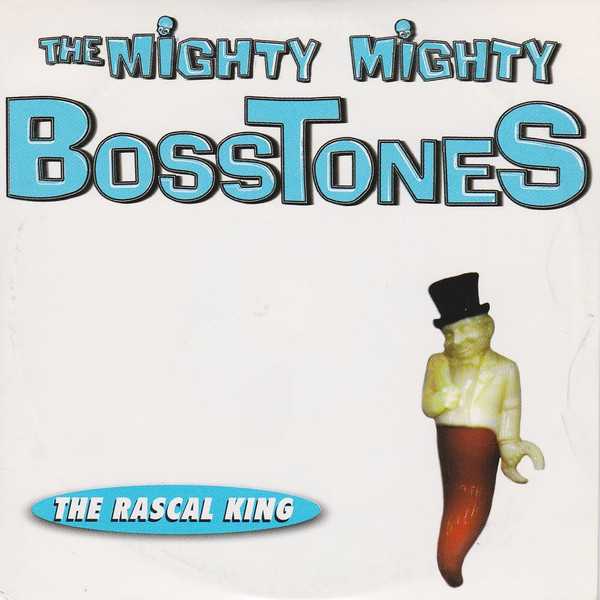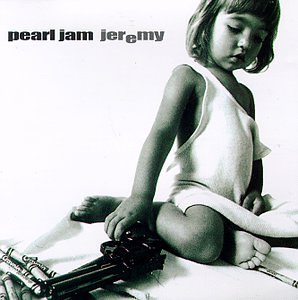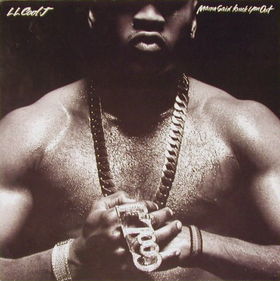Cracker’s “Teen Angst (What the World Needs Now),” released in 1992 as part of their self-titled debut album, remains one of the definitive expressions of early 1990s alternative rock. Combining biting lyrics, a crunchy guitar-driven sound, and David Lowery’s sardonic vocal delivery, the track captured the disaffected energy, frustration, and rebellious spirit of a generation navigating uncertainty, self-discovery, and cultural change. More than just a single, “Teen Angst” served as a rallying cry for those grappling with the contradictions and pressures of adolescence, making it a landmark song in Cracker’s catalog and a resonant piece of the broader alternative rock landscape of the 1990s. Its enduring appeal lies in its clever balance of irony, anger, and melody, demonstrating the band’s ability to turn personal and social observation into compelling musical art.
From its opening guitar riff, “Teen Angst” establishes a driving, urgent energy that immediately commands attention. The song’s instrumentation, led by Lowery’s raw guitar tone and the rhythmic support of bassist Davey Faragher and drummer Frank Funaro, creates a taut, propulsive sound that mirrors the tension and restlessness articulated in the lyrics. The guitar lines are jagged yet melodic, weaving hooks into a framework of distortion and feedback that reflects both the chaotic and self-conscious qualities of teen life. This musical tension, expertly crafted, gives the song its signature edge and underscores the thematic content: a mix of frustration, confusion, and reluctant defiance.
Lowery’s vocals are central to the song’s impact. His delivery alternates between sardonic monotone, sarcastic wryness, and bursts of impassioned energy, perfectly conveying the complex emotions of teenage uncertainty and disillusionment. The lyrics, laced with irony and wit, navigate the landscape of adolescent alienation, societal expectations, and cultural critique. Lines like “What the world needs now is love, sweet love / What the world needs now is a f***ing disaster” encapsulate the juxtaposition of conventional expectations and the chaotic reality of growing up. Lowery’s phrasing and tonal choices add layers of nuance, allowing the song to operate simultaneously as satire, confession, and cathartic expression.
Lyrically, “Teen Angst” is a keenly observed social commentary, channeling both personal experience and broader generational sentiments. The song captures the tension between conformity and rebellion, aspiration and disillusionment, hope and cynicism. Lowery’s words are sharp and evocative, referencing the contradictions inherent in adolescence and young adulthood. By combining humor, sarcasm, and raw emotional honesty, the lyrics resonate with listeners who recognize their own experiences of social pressure, confusion, and emotional turbulence. This lyrical sophistication elevates the track beyond a simple rock anthem, making it a reflective, relatable, and enduring piece of songwriting.
Musically, the song exemplifies the early 1990s alternative rock sound, blending elements of punk, indie rock, and post-grunge textures. The guitars provide both aggression and melody, creating a tension that mirrors the dualities in the lyrics. The rhythm section is propulsive, driving the song forward with energy and precision, while subtle instrumental flourishes—riffs, fills, and harmonic layering—add depth and texture. The track balances accessibility with grit, ensuring that it is both radio-friendly and authentically raw, a combination that contributed to its success and resonance within the alternative rock movement.
The song’s structure contributes to its sense of urgency and immediacy. Verses build tension with rhythmic repetition and minimalist melodic phrasing, creating space for Lowery’s lyrics to take center stage. The chorus releases this tension with melodic emphasis and a slightly anthemic quality, reinforcing the central themes of rebellion and existential questioning. Instrumental breaks allow the band to explore textural and harmonic ideas, while still maintaining the song’s momentum and cohesion. This careful structuring ensures that the track engages listeners while emphasizing the emotional highs and lows associated with teenage angst and self-discovery.
“Teen Angst” also reflects Cracker’s ability to blend humor with serious social commentary. The song’s ironic tone allows it to critique societal norms and the contradictions of youth culture without becoming didactic. The playful elements—such as over-the-top phrasing or sarcastic exaggeration—contrast with the underlying emotional sincerity, creating a dynamic tension that is both engaging and thought-provoking. This interplay between levity and gravity is a hallmark of Cracker’s songwriting, demonstrating their skill in capturing the complexity of human experience within the framework of rock music.
Upon its release, “Teen Angst” quickly established itself as a signature track for Cracker. The song’s combination of memorable hooks, incisive lyrics, and raw energy resonated with both critics and audiences, solidifying the band’s presence in the alternative rock scene. Its success also highlighted the appeal of music that could simultaneously entertain and provoke thought, offering both catharsis and insight for listeners navigating the challenges and contradictions of adolescence. The track became a defining moment in the early 1990s alternative rock landscape, capturing the cultural and emotional zeitgeist with precision and flair.
Production-wise, the song retains an unpolished, almost garage-band immediacy that enhances its thematic content. The recording captures the raw energy of the band while maintaining clarity and balance across instruments. Guitar tones are gritty but distinct, the rhythm section is tight yet flexible, and Lowery’s vocals are prominent without overpowering the instrumentation. This production approach reinforces the sense of authenticity and urgency, allowing the listener to feel the intensity and emotional resonance of the performance. It also mirrors the aesthetic of alternative rock at the time, emphasizing sincerity, edge, and the imperfections that make live music compelling.
Live performances of “Teen Angst” demonstrate the band’s commitment to energy, improvisation, and audience engagement. On stage, the song often stretches beyond its studio version, incorporating extended instrumental sections, crowd interaction, and heightened intensity. These performances underscore the track’s role as an anthem for disaffected youth, providing a communal outlet for frustration, humor, and emotional release. Fans frequently cite live renditions as transformative experiences, highlighting the song’s ability to translate personal sentiment into collective catharsis.
The cultural resonance of “Teen Angst” extends beyond its immediate musical context. The song’s themes of disillusionment, rebellion, and self-exploration reflect broader social currents of the early 1990s, including the rise of alternative culture, skepticism toward authority, and the search for authentic expression. Its influence can be seen in subsequent alternative and indie acts who sought to capture similar tensions between humor, critique, and emotional honesty. By articulating the anxieties and contradictions of youth in a compelling musical framework, Cracker contributed to a broader dialogue about generational identity, personal autonomy, and the role of art in reflecting and shaping social experience.
The song’s lyrics, while specific to adolescence, also contain a timeless quality. Lines referencing frustration with societal expectations, the search for authenticity, and the challenges of growing up remain relevant for listeners across generations. This universality ensures that “Teen Angst” continues to resonate, offering both a historical snapshot of the 1990s alternative rock scene and an enduring reflection on the emotional landscape of youth. The balance between specificity and universality allows the track to function as both a generational anthem and a personal reflection for individual listeners.
Musically, the interplay between guitars, bass, and drums contributes to the song’s dynamic tension. The distorted guitar riffs create both aggression and melodic interest, while the bass anchors the harmonic structure and adds rhythmic propulsion. Drumming alternates between steady beats and syncopated fills, enhancing the song’s momentum and providing space for instrumental interplay. These elements combine to create a sound that is energetic, engaging, and emotionally expressive, perfectly complementing the lyrical themes of disillusionment and rebellious humor.
“Teen Angst” also demonstrates Cracker’s skill in crafting memorable hooks. The chorus, with its catchy melody and ironic phrasing, lodges in the listener’s mind, creating a sense of familiarity and resonance. The song’s riff-based structure, combined with the vocal phrasing, ensures that listeners can engage with it immediately while also discovering new layers upon repeated listening. This combination of accessibility and depth contributes to the track’s enduring popularity and status as a classic of early 1990s alternative rock.
The track’s influence can also be traced through its impact on other artists and the broader alternative rock genre. Its blend of humor, irony, and raw emotional honesty set a standard for bands seeking to articulate the contradictions of youth and emerging adulthood. Its melodic and instrumental innovations, particularly in the interplay between guitars and vocals, have informed the work of subsequent indie and alternative acts. Moreover, its combination of wit and emotional depth demonstrated the potential for rock music to engage intellectually and emotionally, expanding the expressive possibilities of the genre.
From a cultural perspective, “Teen Angst” captures the zeitgeist of the early 1990s. It reflects a period marked by generational questioning, skepticism toward traditional norms, and an embrace of alternative subcultures. Its themes of rebellion, self-discovery, and ironic detachment mirror broader societal trends, making the song both a product of its time and a timeless reflection on adolescent experience. By articulating these tensions in a musically compelling form, Cracker provided listeners with both entertainment and insight, reinforcing the role of alternative rock as a vehicle for cultural expression and commentary.
The song’s legacy endures because it captures both the specificity of a moment in time and the universality of the emotions it portrays. Its musical energy, lyrical wit, and emotional honesty allow it to resonate with listeners across decades. Whether experienced through studio recordings, live performances, or modern streaming, “Teen Angst” continues to engage audiences with its blend of humor, critique, and raw emotional expression. Its ability to articulate complex feelings in a relatable and musically engaging way ensures its place as a seminal work in Cracker’s catalog and in the broader alternative rock canon.
Ultimately, Teen Angst (What the World Needs Now) by Cracker is more than a song; it is a declaration of discontent, a reflection on growing pains, and an anthem for those navigating the turbulence of adolescence and young adulthood. Its combination of witty lyricism, melodic ingenuity, and raw instrumental energy captures the paradoxes of youth—frustration and hope, sarcasm and sincerity, rebellion and reflection. By translating these contradictions into a compelling musical experience, Cracker created a track that is both emotionally resonant and culturally significant.
The enduring appeal of “Teen Angst” lies in its ability to speak directly to the listener’s experience while maintaining a sharp, ironic lens on societal norms. Its driving instrumentation, memorable hooks, and incisive lyrics create a sense of immediacy and engagement, drawing listeners into the emotional and cultural landscape of the early 1990s. At the same time, its themes are timeless, capturing the universal challenges of adolescence, identity formation, and navigating the complexities of the world.
From the first jagged guitar riff to the biting humor of the lyrics, “Teen Angst” embodies the spirit of Cracker as a band: sharp, witty, musically inventive, and emotionally resonant. Its combination of raw energy, melodic sophistication, and lyrical insight ensures that it remains a touchstone for fans of alternative rock and a landmark of early 1990s music. The song’s lasting legacy is a testament to the power of rock music to capture the contradictions of life, articulate personal and cultural truths, and resonate across generations.
Whether heard on its original album, experienced live in concert, or revisited decades later, Teen Angst by Cracker continues to stand as a definitive anthem for those grappling with the confusion, frustration, and exhilaration of youth. Its blend of humor, irony, musicality, and emotional honesty ensures that it remains relevant, resonant, and compelling—a song that not only captures the essence of its era but also speaks to the enduring human experience of questioning, growing, and navigating the world with both defiance and curiosity.



